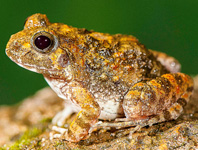Abstract
A new monotypic genus, Tapantiomyia gen. nov., is proposed for a new species of muscid fly, T. enigmatica sp. nov., found in the Tapantí National Park, Costa Rica. It is only known by a single male specimen taken in a Malaise trap in tropical cloud forest, but deserves immediate attention because of its bizarre, stilt-legged appearance in combination with several other unique apomorphies that preclude placement in any known genus of Muscidae. Tapantiomyia enigmatica is so strange that it tend to run out to Scathophagidae rather than Muscidae in keys to families of Diptera. However, the morphology of the male genitalia provides decisive evidence for a placement in Coenosiinae, a large and diverse group of predatory Muscidae. Two tribes, Limnophorini and Coenosiini, are currently recognized within Coenosiinae, but the monophyly of Limnophorini remains uncertain. Tapantiomyia is tentatively assigned to the Limnophorini.
References
Borkent, A. & Brown, B.V. (2015) How to inventory tropical flies (Diptera)—One of the megadiverse orders of insects. Zootaxa, 3949 (3), 301‒322.
https://doi.org/10.11646/zootaxa.3949.3.1Buck, M., Woodley, N.E., Borkent, A., Wood, D.M., Pape, T., Vockeroth, J.R., Michelsen, V. & Marshall, S.A. (2009) Key to Diptera families—adults. In: Brown, B.V., Borkent, A., Cumming, J.M., Wood, D.M., Woodley, N.E. & Zumbado, M.A. (Eds.), Manual of Central American Diptera. Vol. 1. NRC Research Press, Ottawa, pp. 95‒156.
Carvalho, C.J.B. de & Couri, M.S. (2002) Part I. Basal groups. In: Carvalho, C.J.B. de (Ed.), Muscidae (Diptera) of the Neotropical Region: Taxonomy. Editora UFPR, Curitiba, pp. 17‒132.
Couri, M.S. & Carvalho, C.J.B. de (2013) A new genus and species of Coenosiini from Costa Rica (Diptera, Muscidae, Coenosiinae). ZooKeys, 321, 25‒33.
https://doi.org/10.3897/zookeys.321.5443Couri, M.S. & Pont, A.C. (1999) A key to the world genera of the Coenosiini (Diptera, Muscidae, Coenosiinae). Studia dipterologica, 6, 93‒102.
Couri, M.S. & Pont, A.C. (2000) Cladistic analysis of Coenosiini (Diptera: Muscidae). Systematic Entomology, 25, 373‒392.
https://doi.org/10.1046/j.1365-3113.2000.00125.xCumming, J.M. & Wood, D.M. (2009) Adult morphology and terminology. In: Brown, B.V., Borkent, A., Cumming, J.M., Wood, D.M., Woodley, N.E. & Zumbado, M.A. (Eds.), Manual of Central American Diptera. Vol. 1. NRC Research Press, Ottawa, pp. 9‒50.
Hennig, W. (1965) Vorarbeiten zu einem phylogenetischen System der Muscidae (Diptera: Cyclorrhapha). Stuttgarter Beiträge zur Naturkunde, 141, 1‒100.
Kutty, S.N., C Pont, A.C., Meier, R. & Pape, T. (2014) Complete tribal sampling reveals basal split in Muscidae (Diptera), confirms saprophagy as ancestral feeding mode, and reveals an evolutionary correlation between instar numbers and carnivory. Molecular Phylogenetics and Evolution, 78, 349‒364.
https://doi.org/10.1016/j.ympev.2014.05.027Malloch, J.R. (1934) Muscidae. In: Diptera of Patagonia and South Chile, 7 (2), 171‒346. British Museum (Natural History), London.
Savage, J. & Vockeroth, J.R. (2010) Muscidae (house flies, stable flies). In: Brown, B.V., Borkent, A., Cumming, J.M., Wood, D.M., Woodley, N.E. & Zumbado, M.A. (Eds.), Manual of Central American Diptera. Vol. 2. NRC Research Press, Ottawa, pp. 1281‒1296.
Vockeroth, J.R. (1987) Scathophagidae. In: McAlpine, J.F., Peterson, B.V., Shewell, G.E., Teskey, H.J., Vockeroth, J.R. & Wood, D.M. (Eds.), Manual of Nearctic Diptera. Vol. 2. Monograph No. 28. Research Branch, Agriculture Canada, Ottawa, pp. 1085‒1097.

